Global New Years Eve Traditions To Bring Good Luck In 2024
As the calendar flips to a new year, cultures from around the world come together to usher in good fortune and happiness. From Spain’s ritual of eating 12 grapes at midnight to Denmark’s custom of jumping into January with abandon, each country has its unique way of welcoming the fresh start. In Japan, the joyous sound of temple bells fills the air, while in Brazil, people make offerings to the ocean for a prosperous year ahead.
Scotland’s tradition of ‘first-footing’ involves bringing gifts and good cheer to friends and family, whereas Italy celebrates with red underwear and lentil-filled pots. The Philippines, meanwhile, honors the new year with an abundance of round fruits and treats. In the United States, the iconic ball drop in Times Square signals the start of a fresh chapter, while Estonia’s custom of eating for abundance is all about savoring the moment.
And finally, South Africa’s tradition of furniture tossing is a quirky way to bid farewell to the old and welcome the new. As we reflect on these diverse customs, we’re reminded that the world truly comes together in the spirit of renewal and celebration.
Spain: Twelve Grapes of Luck
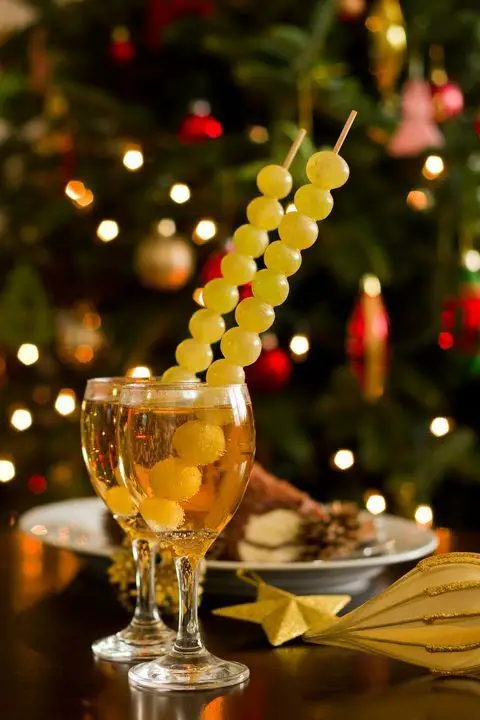
As the clock strikes midnight in Spain, people indulge in a unique tradition – eating twelve grapes, one for each chime of the bell. This custom, known as ‘Las doce uvas de la suerte,’ is a symbolic way to wish for good fortune in the coming year, with each grape representing a month. The frantic pace and anticipation as individuals strive to keep up with the clock’s chimes add an air of excitement and hope to this festive celebration.
Denmark: Leaping into January
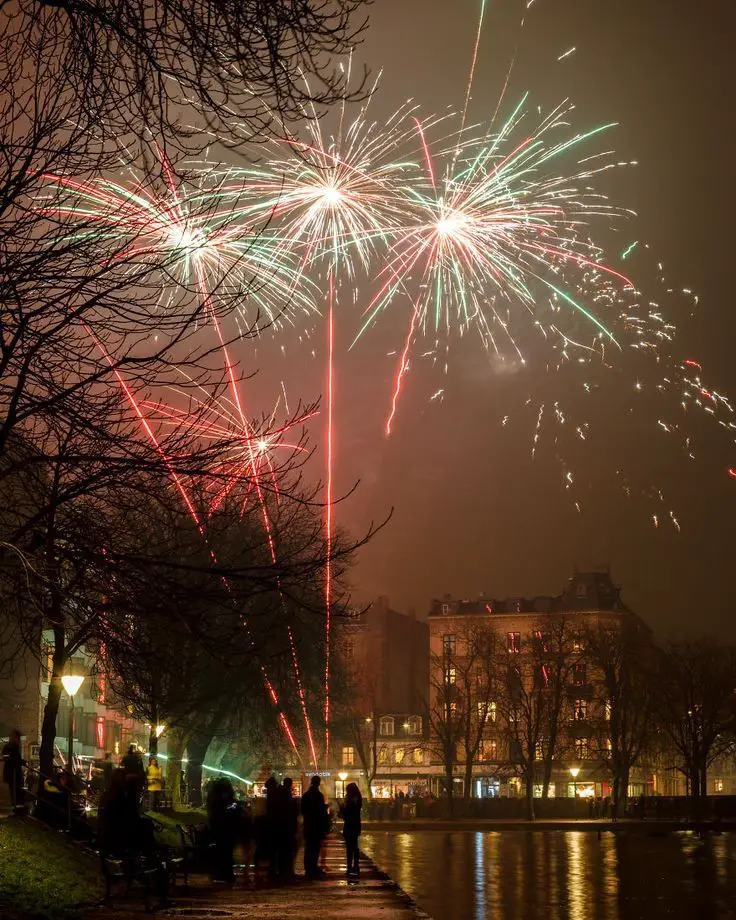
As the clock strikes midnight on January 1st, Denmark’s unique New Year’s celebration takes a literal leap of faith. In a festive and quirky tradition, Danes jump off chairs to bid farewell to the old year and welcome the new one with open arms. This spirited ritual not only banishes any lingering bad luck but also brings in good fortune, making it an unforgettable way to kick-start the year.
Japan: Joya no Kane
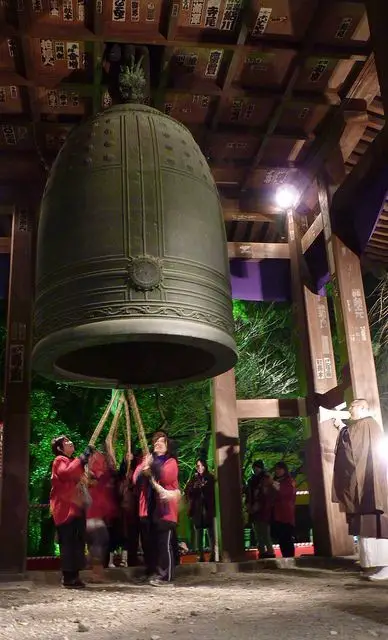
In Japan’s Buddhist temples, a sacred tradition unfolds as monks toll their bells 108 times, marking the ritual of ‘Joya no Kane.’ This sonic cleansing ceremony signifies the eradication of 108 worldly desires, paving the way for spiritual purification and good fortune in the forthcoming year. As the gentle chimes reverberate through the crisp air, the atmosphere is filled with an aura of serenity and contemplation.
Brazil: Ocean Offerings

In Brazil, a unique cultural phenomenon takes place to pay homage to Yemanjá, the revered goddess of the sea. During this ceremony, devotees don white attire and flock to the shores to express their faith. As part of the ritual, delicate offerings like flowers and candles are gently released into the ocean, serving as prayers for good fortune and prosperity. The resulting tableau is one of serenity and reverence, a poignant display of humanity’s connection with the divine.
Scotland: First-Footing

In Scotland, the ‘first-footing’ tradition plays a significant role in ushering in the New Year. As per custom, the first person to cross the threshold of a home after midnight is tasked with bestowing symbolic gifts upon the household. These thoughtful offerings typically include coal, shortbread, salt, whisky, and black bun. This ancient practice is believed to bring good fortune and prosperity to the household for the year ahead, making it an integral part of Scottish New Year celebrations.
Italy: Red Underwear and Lentils

In Italy, the tradition of donning red underwear on New Year’s Eve is deeply rooted in the pursuit of good fortune and prosperity. This custom, believed to ward off evil spirits, is complemented by the incorporation of lentils into meals, a symbol of wealth and abundance. The fusion of fashion and food exemplifies Italy’s rich cultural heritage, where festivities are often infused with symbolic gestures.
Philippines: A Bounty of Round Things
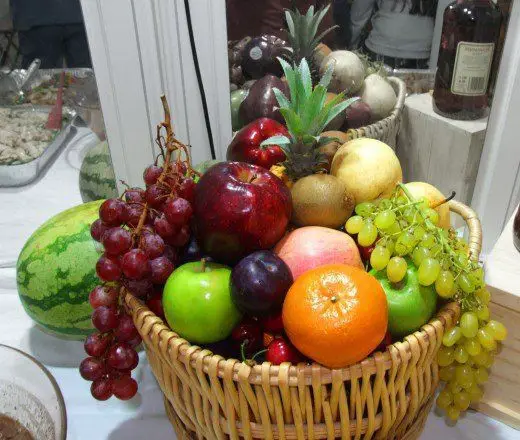
In Filipino culture, a fascination with rounded shapes is believed to attract wealth and prosperity. A unique tradition involves displaying 12 different types of round fruits on New Year’s Eve, each representing one month of the year. This practice is thought to ensure good fortune and luck, with the more fruits displayed, the greater the chances of prosperity.
United States: The Ball Drop in Times Square
The iconic ball drop in Times Square, New York City, serves as a potent symbol of New Year’s Eve. As millions tune in to watch the countdown, they’re not just marking the passage of time – they’re collectively anticipating and hoping for what the future holds.
Estonia: Eating for Abundance
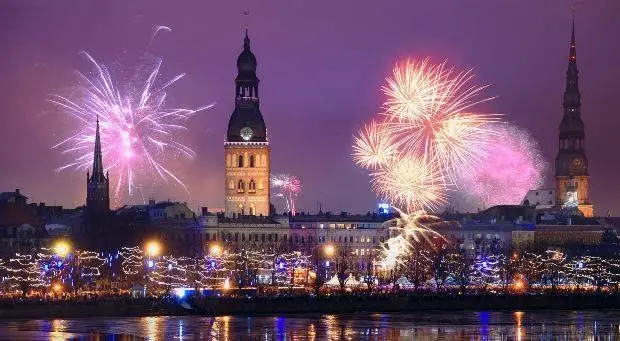
In Estonia, a unique tradition is observed on New Year’s Day. According to local folklore, consuming a specific number of meals – seven, nine, or twelve – is believed to bring abundance and prosperity. However, these meals are not full-fledged feasts, but rather, they take the form of snacks and treats. This peculiar practice is thought to be good luck, as leaving some food on the plate is seen as an offering to ancestral spirits.
South Africa: Furniture Tossing

As the clock strikes midnight on New Year’s Eve, different cultures around the world come together to celebrate the start of a new chapter. In some parts of South Africa, like Johannesburg’s Hillbrow neighborhood, it’s a long-standing tradition to literally cast away old troubles by throwing out old furniture from windows. This dramatic ritual symbolizes the power of letting go and embracing change.
Similarly, in Spain, people come together to share grapes and toast the start of a prosperous year. In Brazil, offerings are made at the ocean, seeking blessings for the coming year. Each tradition shares a common thread – a deep-seated desire for hope, joy, and prosperity. As we welcome 2024, let’s celebrate these unique customs and join in the universal wish for a year filled with health, happiness, and abundance. Here’s to a lucky and splendid start!






